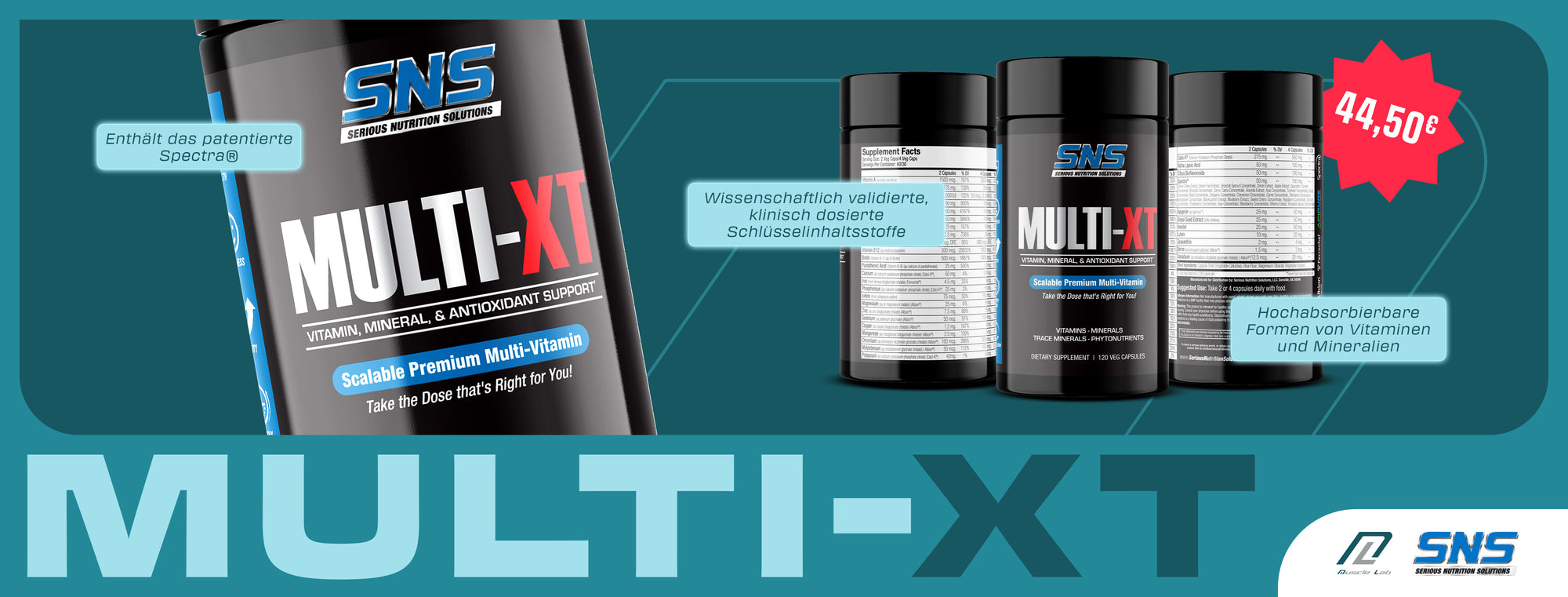What is a multicomponent protein?
As the name suggests, the special feature of a multi-component protein is its composition of several different protein sources. These typically include whey concentrate, whey isolate, egg protein, soy protein, and various milk proteins (caseins).
The big advantage here is that you combine the biological value and absorption rate of all available protein sources, thus ensuring a short- to long-term supply of amino acids without having to buy different proteins.
Who are multi-component proteins suitable for?
A multi-component protein is best suited for those who don't want to worry too much about the nutritional values of different protein powders but still want the best possible mix of different protein sources. A multi-component protein can also help meet your protein needs if you have various intolerances, even if you're lactointolerant, for example. (For example, a protein powder made from soy and egg protein contains no lactose.)
What benefits does a multi-component protein offer you?
Multi-component proteins are usually blends containing whey, egg, and milk proteins such as casein. This ensures the body receives the benefits of each individual protein form. Multi-component proteins are perfect for everyday use when you won't be consuming a suitable protein source for a while (for at least 3-4 hours). The biological value of multi-component proteins is usually very high. The well-known whey-egg-casein mix ensures a short-, medium-, and long-term protein supply. This means a balanced relationship between maximum muscle protein synthesis and muscle protection through the rapid and constant supply of essential amino acids for muscle building. In principle, many multi-component proteins use casein as their main protein source, egg to improve the amino acid balance, and whey for flavor, consistency, and absorption rate.
Different consistencies in multi-component proteins:
- High whey content: rather liquid
- High egg content: partial formation of small lumps
- High casein content: creamy and more flavorful
We would especially recommend a multi-component protein for working people who travel a lot or eat less frequently, as they are filling and provide the body with optimal nutrition for a longer period of time.
What are the disadvantages of a multi-component protein? Is multi-component protein or whey protein better?
A multi-component protein doesn't have any real disadvantages in principle, but the composition and nutritional values are often not "good enough" for bodybuilders and performance-oriented strength athletes. Furthermore, the often unclear distribution of protein sources (how much of each is included) makes it difficult to assess whether there is enough protein to maximize muscle protein synthesis after training.





